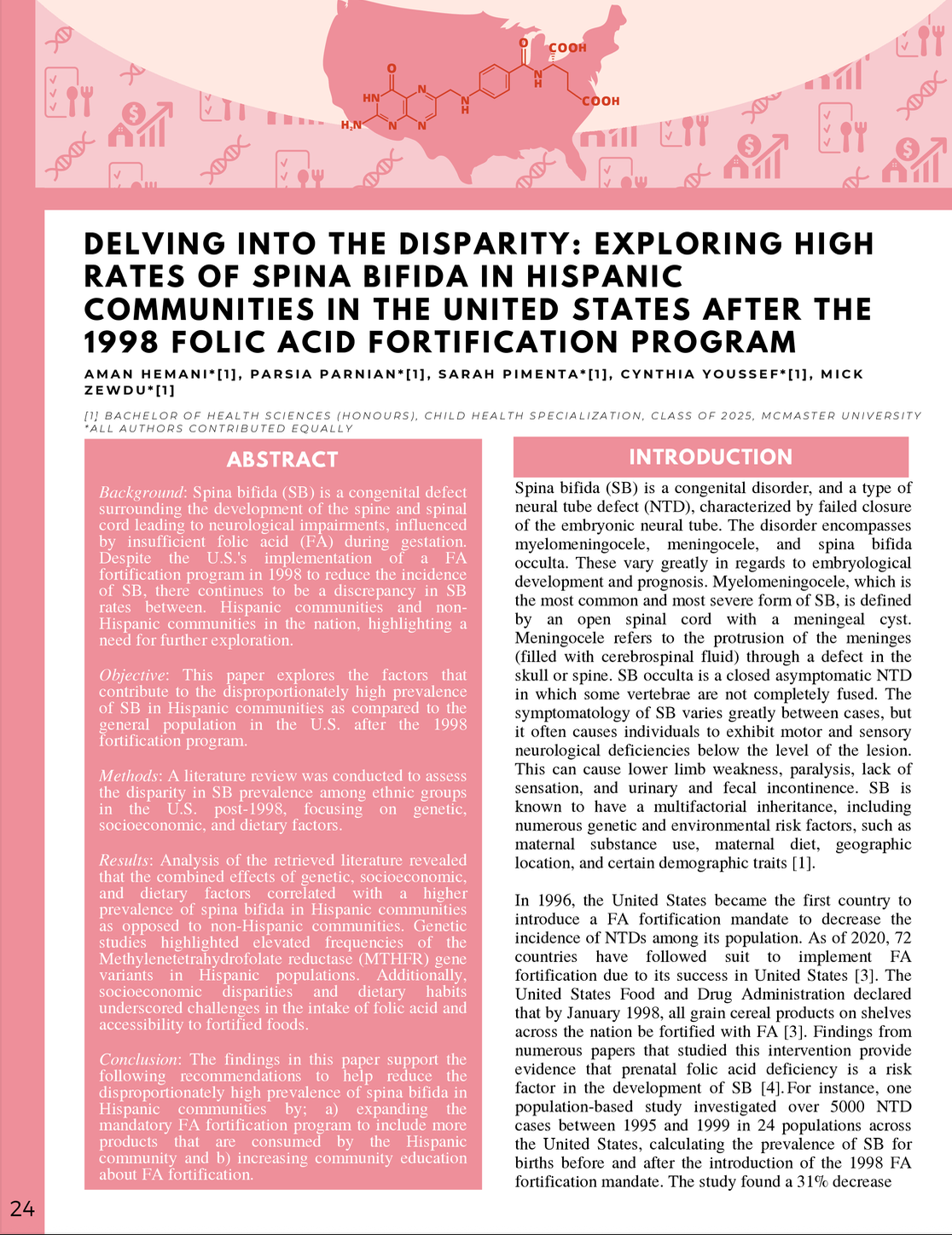Delving into the Disparity: Exploring High Rates of Spina Bifida in Hispanic Communities in the United States After the 1998 Folic Acid Fortification Program
DOI:
https://doi.org/10.15173/child.v3i1.3901Abstract
Background: Spina bifida (SB) is a congenital defect surrounding the development of the spine and spinal cord leading to neurological impairments, influenced by insufficient folic acid (FA) during gestation. Despite the U.S.'s implementation of a FA fortification program in 1998 to reduce the incidence of SB, there continues to be a discrepancy in SB rates between. Hispanic communities and non-Hispanic communities in the nation, highlighting a need for further exploration.
Objective: This paper explores the factors that contribute to the disproportionately high prevalence of SB in Hispanic communities as compared to the general population in the U.S. after the 1998 fortification program.
Methods: A literature review was conducted to assess the disparity in SB prevalence among ethnic groups in the U.S. post-1998, focusing on genetic, socioeconomic, and dietary factors.
Results: Analysis of the retrieved literature revealed that the combined effects of genetic, socioeconomic, and dietary factors correlated with a higher prevalence of spina bifida in Hispanic communities as opposed to non-Hispanic communities. Genetic studies highlighted elevated frequencies of the Methylenetetrahydrofolate reductase (MTHFR) gene variants in Hispanic populations. Additionally, socioeconomic disparities and dietary habits underscored challenges in the intake of folic acid and accessibility to fortified foods.
Conclusion: The findings in this paper support the following recommendations to help reduce the disproportionately high prevalence of spina bifida in Hispanic communities by; a) expanding the mandatory FA fortification program to include more products that are consumed by the Hispanic community and b) increasing community education about FA fortification.

